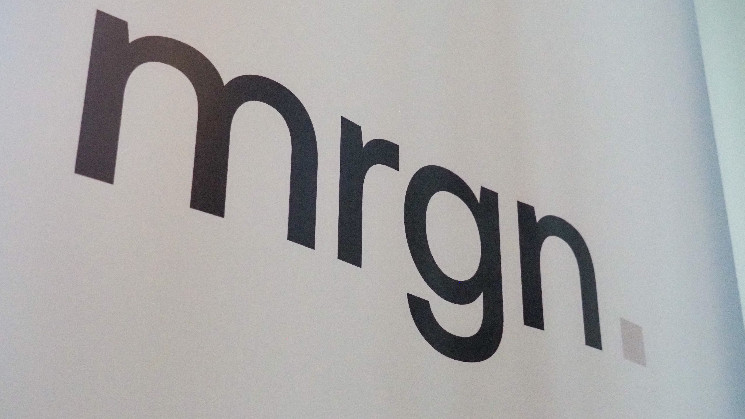MarginFi’s longtime leader, Edgar Pavlovsky, resigned Wednesday following an internal dispute at the protocol’s builder, mrgn.
The abrupt exit won’t impact MarginFi’s borrow-and-lend functions, but it did spur $100 million in capital flight.
Edgar Pavlovsky, the CEO of the company building crypto borrow-and-lend platform MarginFi resigned Wednesday as internal fissures at the major Solana DeFi project erupted into public view.
“I don’t agree with the way things have been done internally or externally,” Pavlovsky said in a Mrgn resignation notice on X, formerly Twitter. Mrgn’s own account called the departure of its co-founder “a function of internal operational disagreements and of his own personal reasons.”
The abrupt exit capped a fiery day for Solana’s second-largest lending platform that saw allegations fly and tempers flare. Amidst the chaos, users pulled nearly $100 million in crypto, according to analytics site DeFiLlama – MarginFi’s largest-ever day of withdrawals.
“All products remain fully operational and are unaffected (and can not be affected) by this departure. The point of DeFi is that core contributors can walk away, and the protocol marches on,” MarginFi said in a tweet.
MarginFi’s meltdown comes after weeks of withdrawal function issues at the borrow-and-lend platform and months after it launched a points program that preceded a wave of growth-fueling incentivization loyalty schemes across Solana DeFi.
But while other protocols reward their points-earning users with a token, MarginFi hasn’t, much to the anger of some of its users.
Oracle issues
A problem in MarginFi’s price data sourcing “oracle” infrastructure had caused some users’ withdrawal requests to fail to start in mid-March when Solana’s network congestion was still rising.
“The stale Oracle issues currently impact withdrawals, not deposits, I think, so it’s leading to some accusations from users who feel that MarginFi is just taking their deposits and not letting them withdraw,” the builder of popular liquid staking service SolBlaze told CoinDesk in a Telegram message.
SolBlaze lodged its own accusations against MarginFi midday Wednesday. The service rewards holders of its bSOL and BLZE tokens with more tokens, which are called emissions. Depositors of SolBlaze tokens on MarginFi also get these reward payouts, but via mrgn and MarginFi.
For at least eight days, however, those payments through MarginFi had not been getting to bSOL and BLZE token owners, according to SolBlaze. This was due to a quirk in the way MarginFi handled earmarked tokens, but it was left unmonitored and with no communication to SolBlaze, which has since severed its business relationship with MarginFi.
“The main problem was our lack of organizational execution,” Pavlovsky told CoinDesk in a Telegram message sent hours before he announced his resignation.
Leadership Transition
Pavlovsky’s exit throws MarginFi’s leadership into uncertainty. An employee of the New York City-centric project referred CoinDesk to MarginFi’s statement.
“We want to assure the community that the core contributors, the company, and our investors are actively engaged to ensure a smooth transition,” the post read without saying who was taking over.
Kyle Samani, managing partner at Multicoin Capital, an investor in MarginFi, posted on X that he remains committed to the protocol and is not withdrawing anything.
One candidate may be MacBrennan Peet, another co-founder of MarginFi with a history of embracing online controversy, including releasing a video of himself shirtless and crowing “wen token” in December 2023.
“Moving forward, I’ll be a more authentic person online,” he said in a tweet. Peet called his previous social media stunts and “very intentionally controversial” persona a “growth-hacking” strategy that “largely worked” to boost MarginFi’s user base.
Growth hack or not, that persona also succeeded in making MarginFi its enemies in Solana DeFi. One of them was Solend, once the leading protocol for borrow-and-lend on Solana.
Moving to capitalize on its foe’s weaknesses, Solend announced it would airdrop a token to MarginFi users who move their money to Solend and keep it there. At press time, the push hadn’t yet led to a noticeable uptick in deposits on Solend, according to DeFillama.
On a day where MarginFi lost $80 million to withdrawals the major borrow-and-lend platform Kamino saw $51 million in deposits, its third largest day of inflows ever.
Wen token?
From Mac’s “wen token” shirtless meme video to the daily chants of “wen token” in MarginFi’s Telegram channel, the protocol faces intense pressure to drop a new crypto asset to its user base.
“People feel like they’ve been farmed for TVL without getting the airdrop that they would have expected from a points program,” SolBlaze said.
On Wednesday MarginFi, MacBrennan and mrgn had little to reveal about when, or even if, it would launch a governance token that decentralizes its decision-making. Such an asset would theoretically give holders a vote in the operations of MarginFi. If it were airdropped to users it would likely provide a windfall to the thousands of points earners who have farmed MarginFi since July 2023.
“The MRGN development team will carry on work towards full decentralization,” a tweet read.
Next steps
The departure of Pavlovsky will not impact mtnDAO, a biannual month-long coworking event hosted in Salt Lake City by MarginFi and Cypher, said Cypher CEO Barrett Williams, a close friend of Pavlovsky.
“I don’t have next steps yet, but as mrgn’s founder it’s ultimately my failure that this happened, and like I’ve done for years, I’ll reflect and evolve,” Pavlovksy said in his resignation tweet, which came around three hours after SolBlaze’s first accusation.
Less than an hour later, he was back: “Okay, what should I build next.”







Leave a Reply